Introduction
For many homeowners and DIY enthusiasts, power saws are indispensable tools that simplify everything from basic repairs to ambitious home upgrades. Whether you’re trimming baseboards, cutting plywood, or tackling a custom shelving project, a reliable power saw can save you hours and deliver professional results. But with great power comes great responsibility: these tools can also cause serious injuries if not used with care. According to the Consumer Product Safety Commission, thousands of emergency room visits each year are linked to mishaps involving table saws, miter saws, and circular saws. The good news is that most accidents are preventable with the right knowledge, equipment, and habits.
This comprehensive guide provides a detailed safety checklist specifically for using power saws at home. We’ll cover essential personal protective equipment (PPE), workspace setup, saw selection and maintenance, pre-operation checks, safe cutting practices, and post-use care. Whether you’re a beginner or a seasoned DIYer, following these tips will help you work smarter, safer, and with greater confidence.
Understanding the Risks: Why Power Saw Safety Matters
Power saws—including circular saws, miter saws, reciprocating saws, and table saws—are designed to cut through tough materials quickly. Their speed and sharpness make them both efficient and potentially dangerous. Common injuries range from lacerations and amputations to eye damage and hearing loss. Even minor mistakes, such as an unstable workpiece or improper blade selection, can have outsized consequences. Safe use isn’t just about personal protection—it’s also about preventing property damage, avoiding costly repairs, and maintaining your equipment’s longevity.
Essential Personal Protective Equipment (PPE)
The first step in safe saw use is proper PPE. Never operate a power saw without the following:
- Safety Glasses or Goggles: Protect your eyes from flying debris and sawdust. Look for ANSI Z87.1-certified eyewear with side shields.
- Hearing Protection: Prolonged exposure to saw noise can cause permanent hearing loss. Use earmuffs or earplugs rated for at least 25 dB noise reduction.
- Dust Mask or Respirator: Sawing generates fine dust that can irritate your lungs. For MDF or treated wood, use a NIOSH-approved respirator.
- Cut-Resistant Gloves: Not all saw operations allow for gloves (they can catch in spinning blades), but cut-resistant gloves are useful when handling blades or rough materials. Never wear loose gloves while the saw is running.
- Non-Slip Footwear: Ensure stable footing to prevent slips and falls. Closed-toe, non-slip shoes are a must.
- Appropriate Clothing: Avoid loose sleeves, jewelry, or anything that could get caught in moving parts. Tie back long hair.
Preparing Your Workspace
A cluttered or poorly lit workspace is a recipe for mistakes. Take the time to set up your environment for safety and efficiency:
- Clear the Area: Remove any unnecessary tools, cords, or debris from your cutting zone and walking paths.
- Good Lighting: Position task lights to eliminate shadows, especially around the blade and cutting line.
- Stable Work Surface: Use a sturdy bench or saw stand. Wobbling surfaces can cause inaccurate cuts and accidents.
- Ventilation: If sawing indoors, open windows or use fans to disperse dust. Consider a shop vacuum or dust extraction system for frequent use.
- Proper Power Supply: Avoid overloading outlets. Use grounded extension cords rated for your saw’s amperage.
- Emergency Access: Keep a first aid kit and fire extinguisher within reach. Know where your home’s circuit breaker is in case you need to cut power quickly.
Choosing the Right Saw and Blade for the Job
Selecting the proper tool ensures both safety and quality results. Consider the following:
- Saw Type:
- Circular Saw: Versatile for straight cuts in wood or composite materials.
- Miter Saw: Ideal for precise angle cuts (trim, molding, framing).
- Table Saw: Best for ripping large panels and repetitive cuts.
- Reciprocating Saw: Suited for demolition and rough cuts.
- Jigsaw: Useful for curved or intricate cuts.
- Blade Selection: Match blade type and tooth count to your material. Use sharp, undamaged blades—dull blades increase the risk of kickback and binding.
- Compatibility: Never force a blade or accessory that is not designed for your saw model.
Pre-Operation Safety Checklist
Before powering on any saw, run through this essential checklist:
- Read the Manual: Familiarize yourself with the saw’s controls, safety features, and maintenance guidelines.
- Inspect the Blade: Check for chips, cracks, or warping. Replace damaged blades immediately.
- Check Guards and Safety Features: Blade guards, riving knives, and anti-kickback pawls should move freely and be in place. Never disable safety features.
- Test the Power Switch: Ensure it clicks on and off reliably. Check for a working safety lock if equipped.
- Secure the Workpiece: Use clamps or a vise to hold material steady. Freehand cutting increases the risk of slips and kickback.
- Remove Adjusting Tools: Double-check that all wrenches or Allen keys have been removed after making adjustments.
- Confirm Blade Alignment: Blade should be parallel to the fence or guide for straight, safe cuts.
- Dry Run: Perform a test pass (with the saw off) to ensure your setup allows smooth, unobstructed movement.
Safe Cutting Practices: Operation Do’s and Don’ts
Once you’re set up, follow these best practices every time you make a cut:
- Focus: Never operate a saw when tired, distracted, or under the influence of alcohol or medication.
- Hands Clear: Keep hands at least 6 inches away from the blade. Use a push stick for narrow pieces.
- Start and Stop: Wait for the blade to reach full speed before contacting the material, and let it stop completely before adjusting or setting down the saw.
- Feed Rate: Guide material steadily—don’t force it. Forcing increases the risk of binding and kickback.
- Stand to One Side: On table saws and miter saws, stand slightly to the side, not directly behind the blade, to avoid injury from kickback.
- Support Long Pieces: Use roller stands or sawhorses to stabilize large or heavy boards.
- Never Reach Over a Running Blade: Plan your cuts so you don’t need to stretch over the saw.
- Watch for Nails and Fasteners: Metal hidden in wood can cause blade damage and dangerous sparks.
Maintenance and Inspection: Keeping Your Saw in Top Shape
Regular maintenance not only extends your tool’s life but also keeps it safe to use. Schedule these checks:
- Blade Cleaning: Remove pitch, resin, and debris from blades after use. Buildup can cause slow cuts and overheating.
- Lubrication: Periodically oil moving parts as recommended in your manual.
- Inspect Power Cords: Look for fraying, cracks, or exposed wires. Replace damaged cords immediately.
- Check Alignment: Table and fence should remain square to the blade.
- Dust Management: Empty dust bags or containers regularly. Accumulated dust is a fire hazard and can impair visibility.
- Replace Worn Parts: Bearings, brushes, and switches wear out over time. Address issues promptly to avoid sudden failures during use.
Dealing with Common Hazards and Emergency Procedures
Even with all precautions, issues can arise. Know how to respond:
- Kickback: If material suddenly jerks or the blade binds, release the trigger and step back. Investigate the cause before continuing.
- Blade Jams: Disconnect power before freeing a jammed blade. Never use excessive force.
- Electric Shock: If you feel a tingle, stop immediately and check for damaged cords or outlets.
- Injury Response: For deep cuts, apply pressure and seek medical attention. For eye injuries, flush with water and see a doctor immediately.
- Fire: Sawdust can ignite from sparks or overheating. Have a Class A/B/C fire extinguisher nearby and know how to use it.
Storing Power Saws Safely
Proper storage prevents accidents and extends tool life:
- Unplug and Lock: Always unplug saws and lock triggers or remove batteries when not in use.
- Blade Guards On: Engage blade covers or guards before storage.
- Elevated or Enclosed Storage: Store saws on shelves or in cabinets, out of reach of children and pets.
- Dry Environment: Store in a dry area to prevent rust and corrosion.
Safety Innovations: New Gadgets and Features Worth Considering
Recent years have seen several technological advancements in power saw safety. Consider upgrading or adding these features:
- SawStop Technology: Table saws with flesh-sensing brakes stop instantly if skin contacts the blade.
- Laser Guides: Many saws now feature laser or LED guides for precise, visible cut lines.
- Automatic Brake Systems: Some cordless saws incorporate electric blade brakes that stop the blade within seconds of releasing the trigger.
- Wireless Tool Trackers: Bluetooth modules can disable tools remotely or send alerts if they’re moved without authorization.
- Improved Dust Collection: Attachments that connect to shop vacuums or dust extractors keep your workspace cleaner and safer.
Printable Power Saw Safety Checklist
To make safe practices an everyday habit, print and post this checklist in your workspace:
- Wear PPE: Safety glasses, hearing protection, dust mask, proper clothing, and footwear
- Clear and light your workspace
- Inspect saw, blade, and power cords
- Secure workpiece with clamps
- Check and engage all safety features
- Keep hands and body clear of the blade
- Support long or heavy materials
- Stand to the side of the blade
- Perform regular maintenance and cleaning
- Unplug and store saws safely after use
Conclusion
Power saws are among the most useful—and potentially hazardous—tools in any home workshop. The difference between a safe, successful project and a trip to the ER often comes down to preparation and vigilance. By following the detailed safety checklist outlined in this guide, you can dramatically reduce your risk of injury, protect your investment in tools and materials, and enjoy the process of home improvement with peace of mind. Remember, safety is not a one-time action but a continuous mindset: every time you prepare to make a cut, pause and review your setup. Invest in quality PPE, maintain your equipment, and stay informed about the latest safety innovations.
A safe workspace is a productive one. Whether you’re installing shelves, building furniture, or remodeling a room, adopting these best practices will help you get the job done efficiently—and without incident. Stay proactive, respect your tools, and keep safety at the core of every DIY endeavor. Your hands, eyes, ears, and family will thank you for it.


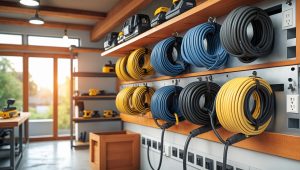
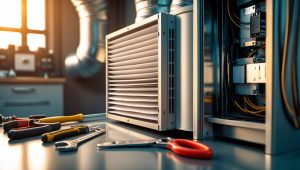

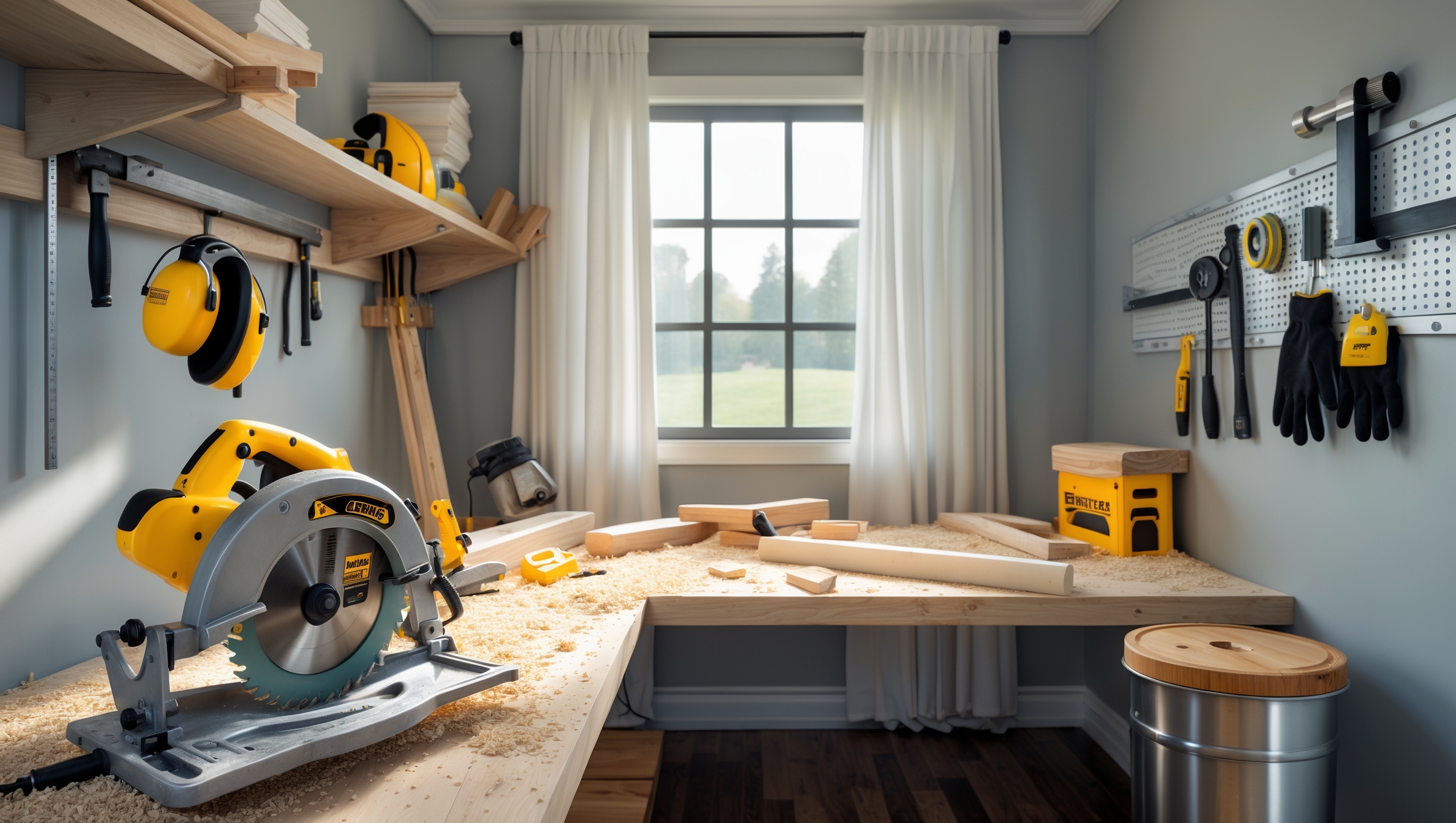

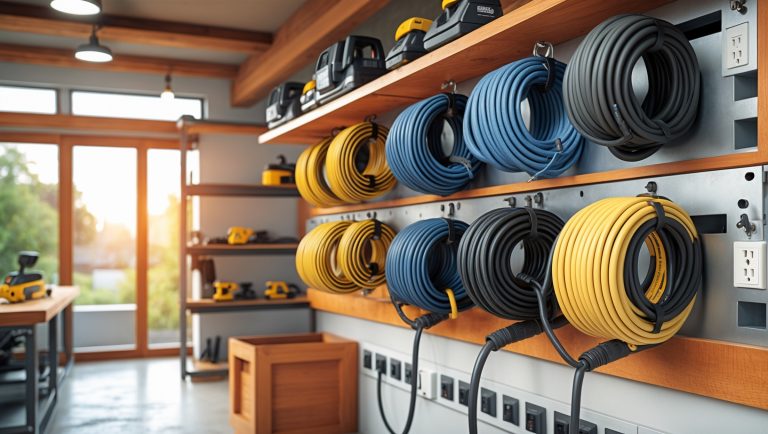

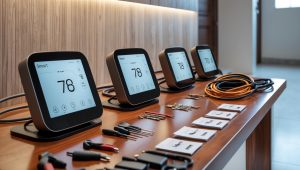
You mention the importance of PPE like safety glasses and goggles, but I was wondering if there are certain types of hand protection or gloves that are actually safe to use with power saws. Some sources say gloves can be dangerous around spinning blades. Can you clarify what’s recommended?
You’re right to ask about gloves, as their use with power saws can be tricky. Generally, bulky gloves are not recommended because they can catch on spinning blades, increasing the risk of injury. However, some specialized, snug-fitting cut-resistant gloves may be used when handling wood or blades, but not while actively operating the saw. Always check the saw manufacturer’s guidelines, and if in doubt, operate power saws with bare hands for the best control and safety.
I noticed that PPE like safety glasses and goggles is emphasized for home use. Is there a particular advantage to using goggles instead of glasses when working in a small, enclosed space, or are they basically interchangeable?
Goggles offer more complete protection in small, enclosed spaces because they seal around your eyes, blocking dust and debris from all sides. Safety glasses protect mainly from direct impact but can let particles in from the sides or underneath. So, in tight spaces where sawdust tends to linger or fly unpredictably, goggles are typically the safer choice.
I see you discuss workspace setup and pre-operation checks, but what are some practical tips for making a small garage safer when using larger saws like table saws or miter saws, especially if space is limited?
To safely use larger saws in a small garage, keep the area clear of clutter and make sure walkways are unobstructed. Use mobile bases for saws so you can move them as needed. Set up extension tables or temporary supports to handle long materials. Always plan your cuts and position yourself so you have enough room to feed and remove materials safely. Good lighting and proper dust collection are also important for visibility and safety in tight spaces.
You mention the importance of proper workspace setup for power saw safety. Could you clarify what features or equipment are essential for setting up a safe work area in a small or shared space, like a garage?
For a safe power saw setup in a small or shared space like a garage, make sure you have a clear, stable work surface, good lighting, and enough space around you to handle materials safely. Use clamps or sawhorses to secure your workpieces. Keep the floor free of clutter and extension cords to prevent tripping. Always have personal protective equipment handy, like goggles and ear protection, and store your saw and blades safely when not in use.
I noticed you listed safety glasses or goggles as essential PPE, but what about people who wear prescription eyeglasses? Do I need special protection or will my regular glasses suffice?
Regular prescription eyeglasses aren’t designed to protect your eyes from flying debris or sawdust. It’s important to wear safety glasses or goggles over your prescription glasses, or use prescription safety glasses that meet safety standards. This extra protection helps prevent injuries while still allowing you to see clearly.
Could you clarify what kind of maintenance should be done on power saws before and after each use? I want to make sure I’m not missing any key steps to prevent accidents or keep my saws running smoothly.
Before each use, inspect the power saw for damage, ensure blades are sharp and securely fastened, and check that safety guards are in place. Remove any debris from vents and moving parts. After use, unplug the saw, clean off sawdust and residue, and inspect the blade for wear. Lubricate moving parts as recommended by the manufacturer, and store the saw in a dry, safe place. These steps help prevent accidents and keep your saw in great working condition.
Could you elaborate on the recommended way to set up a safe workspace for using power saws at home? I have a small garage and want to be sure I’m minimizing risks even with limited space.
To set up a safe workspace in a small garage, start by keeping the area well-lit and free of clutter. Make sure you have enough room to move around the saw and handle long materials. Secure cords to prevent tripping, and set up a sturdy, stable workbench. Always position your saw so that cut materials can move freely without hitting walls or other objects. Use a dust collection system or keep a shop vacuum nearby, and wear proper safety gear like eye and ear protection.
After finishing a project, what steps should I take to properly care for and store my saw to maintain its safety and longevity? Are there common mistakes people make during post-use care that I should avoid?
After using your saw, unplug it and let it cool if needed. Clean off dust and debris, wipe down the blade, and check for any signs of wear or damage. Apply a light oil to metal parts to prevent rust. Store the saw in a dry place, away from children and moisture. Avoid leaving blades dirty or storing the tool while it’s still plugged in—these are common mistakes that can reduce safety and tool life.
When setting up a workspace for a power saw as you recommend, what are some specific features or things I should look out for to avoid accidents, especially if I have kids or pets around the house?
When setting up your workspace, choose an area that can be securely closed off from kids and pets, such as a garage with a locking door. Keep all tools unplugged when not in use and store blades out of reach. Make sure the floor is non-slip and free of clutter, and provide good lighting. Always use a stable workbench and never leave the saw unattended.
I noticed you touched on saw maintenance as part of staying safe. How often should a typical homeowner perform maintenance checks on their power saws, and are there warning signs that signal a saw needs servicing beyond the basics?
A typical homeowner should inspect their power saw before each use for obvious issues like loose bolts or damaged cords. More thorough maintenance, such as cleaning, lubricating moving parts, and checking blades, should be done every few months or after heavy use. Warning signs that need prompt attention include unusual noises, visible sparks, difficulty starting, loss of power, or uneven cutting—these often mean servicing is needed beyond routine checks.
The article mentions using ANSI Z87.1-certified safety glasses, but are there specific recommendations for hearing protection when operating power saws indoors? I want to make sure I’m fully covered in a small workspace.
For indoor use of power saws, consider earmuffs or earplugs rated with an NRR (Noise Reduction Rating) of at least 22–30 decibels. Over-ear earmuffs are often preferred in small, enclosed spaces, as they provide more consistent protection and are easy to put on and take off. Look for products labeled as ANSI S3.19 or OSHA-compliant for reliable performance.
I’m interested in learning more about the pre-operation checks mentioned here. Could you give some specific examples of what to look for when inspecting a saw before turning it on, especially for someone new to using power tools?
When inspecting a saw before use, check that the blade is sharp, undamaged, and securely fastened. Ensure all safety guards are in place and move freely. Look for any loose screws, damaged cords, or frayed wiring. Make sure the switch works properly and the area around the saw is clear of debris. It’s also important to confirm you’re using the right blade for the material you plan to cut.
After finishing a project with my circular saw, what kind of post-use care should I do to keep the saw in good shape and safe for next time? Is there a simple checklist or common mistakes to avoid when storing it?
After using your circular saw, unplug it and let it cool down. Brush off any sawdust, especially around vents and moving parts. Check the blade for damage or dullness and clean it if needed. Wipe the exterior with a dry cloth. Make sure the blade guard moves freely and is not jammed. Store the saw in a dry place, away from moisture, with the blade guard in place. Avoid coiling the cord tightly around the saw, as this can damage it. Regular care like this helps keep your saw safe and ready for your next project.
I’m curious, do you have specific recommendations for PPE brands or types that balance safety and comfort, especially for someone who wears prescription glasses under safety goggles? The article mentions ANSI Z87.1-certified eyewear, but any tips for finding a good fit would be appreciated.
If you wear prescription glasses, look for safety goggles labeled as “over-the-glasses” (OTG) and ANSI Z87.1-certified. Brands like 3M, Uvex, and Pyramex offer OTG goggles designed for comfort and a secure fit over regular glasses. Soft, adjustable straps and anti-fog coatings can also improve comfort. Try them on if possible to ensure they don’t press against your frames or slip during use.
Could you clarify what you mean by ‘pre-operation checks’ for power saws? As someone just starting out, I’m not sure exactly which things I should look for on my equipment before I begin cutting.
Pre-operation checks mean examining your power saw before you start using it to make sure it’s safe and ready. Look for things like a secure blade (tight, not loose), a working safety guard, no visible damage to the cord or plug, and a clean work area. Also, make sure all switches and controls move smoothly and nothing is blocking the ventilation. These steps help prevent accidents and keep your saw working well.